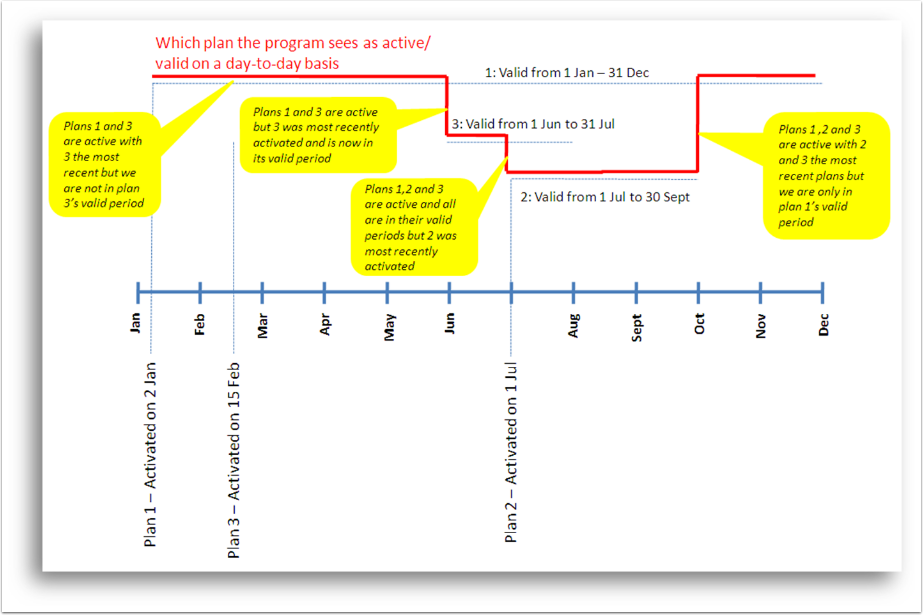Preparing for Building an Organisation Structure
In this Section:
- Guidelines and Rules
- Design and Consider
- Configuration and Administration
Guidelines and Rules
The following guidelines and rules could help to ensure a more successful approach while designing the organisation structure.
- Start small and focus on a portion (e.g. one department or division) of the final structure.
- Don’t build too deep (i.e. too many child nodes) or too wide (i.e. too many sibling nodes) a structure initially. Build a few nodes and evaluate the outcome and practical implications.
- Remember that you can always deactivate (or store) one structure and build the following until you are satisfied with the result.
- As mentioned in section 1, remember that a template is available in which the organisation structure can be built and modified and then imported. However, this does not cancel out the importance of a correct design.
- Confirm what every node in your structure is called e.g. group, division, business unit, department, section etc. before you build the structure. The system allows you to configure the module with your own node descriptions making the structure development easier.
- Confirm the parent-child relationships between the different nodes e.g. Division and/or Group can fall under Company.
- Stipulate which child levels can be linked to which parent levels. In other words what the relationships between the levels are.
Role of Active and Valid in Determining the Applicable Structure or Node
- Every structure and every node is given three dates when it is created and activated. The dates are:
- Activated Date – The date on which a node/structure was made active. This simply means the node/structure COULD be the valid node/structure for today if we are also within the range of the valid from and valid to dates.
- Valid From – The date from which a node/structure COULD be the valid node/structure if the node/structure is also active.
- Valid To – The date until which a node/structure COULD be the valid node/structure if the node/structure is also active.
- More than one organisation structure can be active at the same time but only one company node/structure can be valid/active for any particular day.
- You could have more than one planning structure applicable at the same time.
- Which structure applies to any given day or time period is decided by two criteria and then also strictly in this order:
- The activation date (The active structure with the most recent activation date is considered first )
- The period for which it is valid. (Valid From – Valid To)
- The diagram below gives an example where the applicable structure had to be chosen from between 3 structures all activated on different dates and active for overlapping periods.
Which Structure Applies?
Always consider the following criteria and in this order when determining which organisation structure is valid for a particular day.
- The activation date (The active structure with the most recent activation date is considered first )
- The period for which it is valid. (Valid From – Valid To)
Design and Consider
In this section we will proceed with designing an organisation structure in Excel after which careful consideration will be given to its implications for other modules and reports.
Designing a Simple Organisation Structure
If we start with a very simple organisation structure like the one below, the following is evident.

- In this structure, Company, Division, BU, Department and Section all are examples of node descriptions and will be registered on the Unit Type screen.
- Company is the parent of Division which is the parent of BU which is the parent of Department which is the parent of Section. All these relationships will be registered in the Unit Relationships screen which would ensure that the correct nodes are linked to each other when building the structure.
The Implications of an Organisation Structure
Although what was done above seems simple enough, the implications are far reaching. Consider the following:
Employees will have to be linked to nodes on the organisation structure and most employees will be linked to the lower nodes.
- Positions will have to be linked to nodes. Again it is true that most positions are situated at the lower nodes.
- Job profiles will have to be written for every unique job on every node.
- Reports based on this organisation structure will follow this hierarchy. If your current hierarchical structure for reporting is not the same as what you built here, you are not going to get your reports out according to the desired structure.
- If you have people working only with the employees of a specific section or department, the system will allow you to configure the authorisations accordingly IF your structure makes provision for it. In other words is it possible to uniquely identify those employees by selecting a single department or section in its entirety?
Draft Your Own Organisation Structure
Use a spreadsheet and build a few nodes of your own organisation structure or use an approved structure if available.
- Do you have a clear and unique description for every node?
- Are the relationships between the nodes clear?

